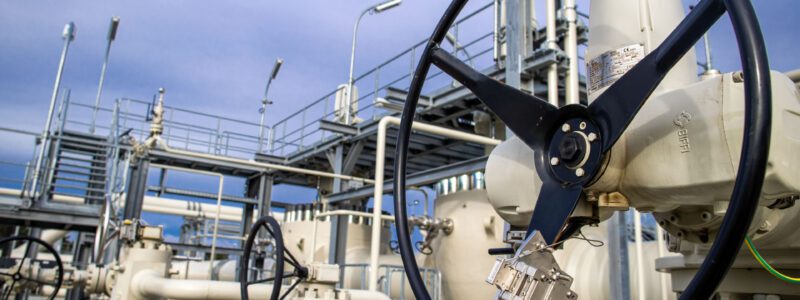
Gazprom’s bid for gas transit through Ukraine has increased to the maximum for the last month (since January 15).
“The operator of Ukraine’s gas transmission system (OGTSU) said it had accepted a transit request from Gazprom for Wednesday in the amount of 35.8 million cubic meters. The figure on Tuesday was 30.8 million cubic meters. The capacity is claimed for only one of the two entry points into the country’s GTS, the Suja gas metering station. No application has been accepted for the corridor through the Sohranovka gas metering station.
The current level of gas reserves in Europe has fallen to 65.66 percent, 20 percentage points above the average for the same date in the last five years, according to the Gas Infrastructure Europe (GIE) association. During the Feb. 13 gas day, inventories were down 0.45 percentage points.
Warm weather in October, November and January as well as austerity measures have resulted in UGS reserve levels now at their highest ever recorded. This strengthens confidence of the authorities in the successful passing of the winter.
Europe’s LNG receiving terminals operated at 62 percent capacity in January, nearly the same in the first days of February. At the same time the level of LNG inventories in the tanks of receiving terminals is decreasing more and more. This suggests that the inflow of new LNG cargoes to the region is falling amid low prices and competition from Asia.
The day-ahead contract at the TTF hub in the Netherlands added just over a percent in the past 24 hours, closing at $592 per thousand cubic meters.
The “Asian premium” is stable. – gap between gas prices in Asia and the price of LNG supplies to Europe. March futures for JKM Platts (Japan Korea Marker, reflecting the spot market price for cargoes supplied to Japan, South Korea, China and Taiwan) traded at $639; futures for LNG supplied to North West Europe (LNG North West Europe Marker) traded at $582.
The state of U.S. UGS reserves is becoming increasingly important to the global market as the country is actively ramping up exports.
In the regular reporting week (ended Feb. 3), reserves fell by 6.1 bcm. For the first time since the beginning of the year, weekly withdrawals exceeded the average for the last five years.
The current reserve level is 49%, 5 percentage points above the five-year average, according to the U.S. Department of Energy’s Energy Information Administration (EIA).
February promises to be a cold month in the country, which will lead to an increase in energy spending for heating. On the other hand – America’s largest LNG plant, Freeport LNG, is still delaying its restart after an accident, leaving gas that was supposed to go to exports in the domestic market.
So far, the EIA has projected that storage inventories will fall by 60 billion cubic meters this winter (the average for the last five years). At the end of March, natural gas volumes in storage are projected to be 40 billion cubic meters. This is 8% below the five-year average.